Table of Contents
Happy birthday Mike Stern, born on this day in 1953.
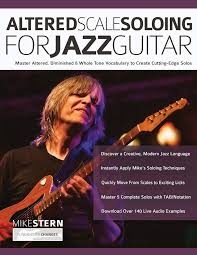
Who is Mike Stern?
The American guitarist Mike Stern, (January 10, 1953, Boston, Massachusetts, United States), studies piano at the initiative of his mother, a classical pianist. At the age of twelve he decided to devote himself to the guitar, emulating his idols BB King, Eric Clapton and Jimi Hendrix. Although he did not seriously devote himself to studying it until he entered Berklee in 1971.
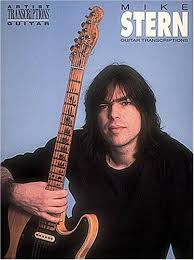
Best Sheet Music download from our Library.
He remained there for three years, having Pat Metheny as a teacher and Bill Frisell as a friend. He played in local clubs, mainly with saxophonist Jerry Bergonzi, and in 1975 he landed a two-year contract with Blood, Sweat & Tears and appeared on “BS&T’s More than Ever” and “Brand New Day.” This gave him the opportunity to meet Jaco Pastorius and Don Alias, two very important figures throughout his life.
In Boston, he studied with the jazz pianist, Charlie Bacanos. In 1976 he recorded a rock album with Charlie & The Pep Boys. After various jobs, in 1979 he worked with Billy Cobham, replacing John Scofield. The following year he played with saxophonist Bill Evans, who recommended him to Miles Davis.
He made his debut with Miles’ band in 1981, at Boston’s Kix Nightclub; a performance that was recorded and released by CBS as “We Want Miles.” He remained with the trumpeter until 1983, appearing on the recordings of “The Man with the Horn” and “Star People.” He recorded his first solo album and in 1984 he worked with Pastorius’ group, on the “Jaco Pastorius’ World of Mouth Band” tour with Kenwood Dennard, drummer; Alex Foster, saxophones; Melton Mustafa, trumpet and Don Alias, percussion.

Please, subscribe to our Library.
If you are already a subscriber, please, check our NEW SCORES’ page every month for new sheet music. THANK YOU!
The following year he returned to Miles Davis’ band and began his second tour with him until the end of the year. In the summer of 1986 he participated with David Sanborn’s group and shared the stage at Steps Ahead with Mike Mainieri, saxophonist Michael Brecker, bassist Darryl Jones and drummer Steve Smith.
Between tours he played at the 55 Bar in New York, almost always in a trio, with Jeff Andrews or Harvie Swartz, Adam Nussbaum, Victor Lewis, Joel Barron or Ronnie Burrage. Later he made his second album “Upside Downside” for the Atlantic Records label with his colleagues Sanborn, Pastorius, saxophonist Bob Berg, bassist Mark Egan and Jeff Andrews, Mitch Forman on piano and drummer Dave Weckl and Steve Jordan.
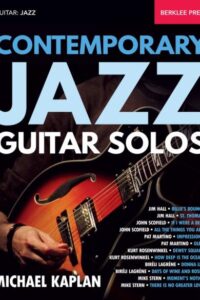
In 1988 he recorded “Time in Place” with the Atlantic label in the company of Bob Berg, Brecker, Peter Erskine and Don Alias. In 1991 he toured with saxophonist Bob Berg who had Dennis Chambers on drums and Lincoln Goines on bass. Between 1989 and 1992 he joined some of the Brecker Brothers Band’s performances. In 1993 he released his album “Standard” and was named Best Jazz Guitarist of the Year by critics and readers of Guitar Player magazine. Successes followed such as those obtained with the albums “Is what It Is” in 1994 and “Between the Lines” in 1996, both nominated for Grammy Awards.
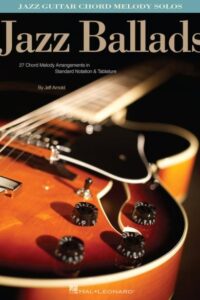
In 1997 he recorded “Give and Take” with bassist John Patitucci, drummer Jack DeJhonette, percussionist Don Alias and the special collaboration of Michael Brecker and David Sanborn. With an energetic and fiery style, borrowed widely from rock, its sound can change throughout the same song, where it does not hesitate to play with the clear and light timbre of bop guitarists, to later swing, in a brutal way, into the twisted and acidic collaborations, evocative of “hendrixian” effusions.
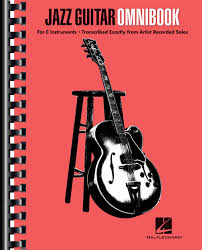
The guitar, an instrument that is often criticized for having an excessively linear sound, acquires an exceptional dynamic amplitude in his hands. His phrasing is both sharp and flexible, and his harmonic language nimbly integrates rock and blues into a more specifically jazzy discourse. The album “Voices,” which he released in 2002, also received a Grammy nomination.
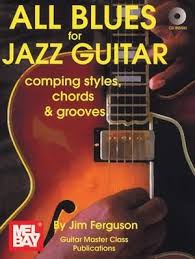
Guitarist Mike Stern Plays & Shares Stories of Miles Davis, Jaco and Pat Metheny
In this interview, legendary jazz fusion guitarist Mike Stern dives deep into his groundbreaking career, sharing stories from his time with Miles Davis and his collaborations with bass virtuoso Jaco Pastorius. From his early influences to his distinctive guitar techniques, Mike reflects on the evolution of jazz fusion and his experiences playing with some of the most innovative musicians in the genre.
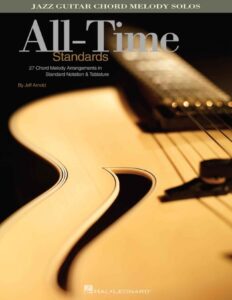
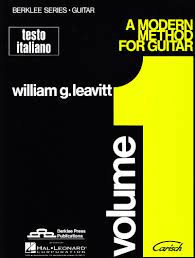
MIKE STERN
We catch up with the guitarist during a break in his lockdown video lessons in New York
Article Name: MIKE STERN Publication: Guitarist
Mike Stern’s first major exposure was playing with Miles Davis in the early 80s, quite a gig for the 28-year-old guitarist who’d started out in his early years with “a $10 acoustic”. Mike’s first proper guitar, however, was a Gibson ES-175: “I got it when I was around 12 years old. I played that for a little while and then a couple of years later I wanted a solidbody and I ended up with a Fender Mustang, or something like that. Then I kinda went between a Strat, which I played with Miles, and a Telecaster,” a guitar that became synonymous with Mike.
“Back then I knew Danny Gatton. I was friends with him and he used to be a guitar repairman and he’d play gigs sometimes. I heard him play and it was unbelievable: I was floored! He was kind of a country type, you know, and he’d say,‘I don’t play too much, just sometimes.’ But everyone knew about him being the most awesome guitar player.
“At that point I had an early 70s Telecaster, not a great one, and I needed it fixing up. Danny said, ‘I’ll fix it up,’ and grabbed it and threw it in his truck. I went back a week later and it was singing like crazy. He bowed the neck a little bit and some whacky backwards kinda stuff, melted some wax or crayon around the pickup and raised it. I really got hooked on Teles after that.
“And then I bought Danny’s spare Telecaster that had belonged to Roy Buchanan. Roy had sold that – or maybe gave it – to him. It was a 50s something, I think. This was back in the early 70s. I played that for a while, but I was getting more and more into jazz, going to Berklee [College Of Music] and I had that ES-175. But it was Pat [Metheny] – we were doing something and I brought the Telecaster along – who said,‘Man, you sound great on that thing. You should play it all the time.’As much as he was into his hollow-bodied guitars he thought the Telecaster was a good fit for me. It suited the music I wanted to play – and I was writing by that time – funk and rock and blues. You can do that on an ES-175 but it’s not the same thing as a solidbody.”
That guitar was infamously stolen at gunpoint from Mike,“even before I recorded any of my records”, he tells us.“The first one was Neesh [1983] for a Japanese label. I was still playing with Miles [Davis]. I used a Strat; that Tele of Danny’s was gone by then. But a local guy, Michael Aronson, had built me a spare [a copy of the Gatton Telecaster that Mike believes had an original Fender Broadcaster neck]. I used that on my first Atlantic record, Upside Downside [1986], and for a whole bunch of stuff until Yamaha said they wanted to make me a guitar.”
Mike frequently refers to the Michael Aronson model as his ‘mutt’ but admits he can’t remember exactly what pickups were in the guitar, though it clearly sported a zebra-coil neck humbucker. “I’m so bad with all that stuff,” he laughs.“I think it was a Barden or Bartolini at the bridge but
I can’t remember what the neck pickup was, although it was a humbucker and it was on the guitar Danny had sold me. I wasn’t using it that much at that time. I wonder if I used it with Blood Sweat & Tears?”
There is some ‘late 70s’ grainy YouTube footage confirming Mike did play a Tele, presumably Danny’s, but it’s next to impossible to say if it had a neck humbucker as what could be the cream coil of a humbucker also looks remarkably like a covered Tele single coil. Mike’s sound, though, not least in such a dense brass-led line-up, does sound cleaner than his fatter, darker tone that you hear on footage with Miles Davis in 1985 where he’s playing the ‘mutt’ blackguard Tele-alike, clearly with a neck humbucker.
So it was the ‘mutt’ that Yamaha used as the starting point for your signature? “Yeah, absolutely. I wanted them to do that but obviously they said it can’t look exactly like that. They did a great job: they got that kinda warmth that the mutt guitar had. See, to me, for a fatter, warmer sound the guitar has to be dense rather than really light, which is sometimes more comfortable to play but doesn’t sound so good to me. Most of the Yamahas I’ve played aren’t super-light; they’re a little heavier and they all sound similar. I could use any one right away if I needed to.
“My 1511MS is pretty old now,” says Mike of the guitar he first used on Play (1999).“It’s been around the block! I was uncomfortable changing to the Yamaha at first because I’d been playing the Michael Aronson guitar for so long. They sent me a few prototypes – they were all good but they weren’t quite right. Then one was really close: it took a minute for me to hear that. The guys at Yamaha were right. They said,‘You’ve just gotta play it and over the years it’ll become…’Well, that’s what happened. It’s that one I’ve played all these years. I’m a one-guitar guy! They’ve sent me spares and they’re all really good, but I’m just used to the one.”
But for such a fluid player, Mike’s setup is a little unusual.“Most people pick it up and say the action’s really high. I use what used to be, as I remember, Fender Regular gauge strings which had a 0.038 on the bottom and then I swapped the high E for an 0.011 – the .010 was just a little too thin-sounding for me. So I use 0.011, 0.013, 0.015, 0.026, 0.032, 0.038 but when people play the guitar they go,‘Wow! These are heavy strings.” But it’s just because the action’s high.”
Part of that, too, is the increased relief (bow) that Danny Gatton had dialled in all those years before.“It’s not a ridiculous bow or anything, but I like it that way. Some people say,‘Why don’t you straighten it out? It’ll be easier to play.’ But for me it isn’t. I mean, if it starts going too much I’ll tweak it, otherwise it’d be like bow and arrow time,” he laughs.“So I’ll tweak if from time to time but very little.”The increased relief “makes it sound a little warmer, less stringy. I’m always after that.” [DB]
“The 1511MS is the one I’ve played all these years. I’m a one-guitar guy!”
Verdict
In recent years Yamaha’s Revstar range has taken centre stage, but the 30-year-old Pacifica – albeit in its double-cut Stratinspired guise – appears to be the meatand-potatoes in the beginner to mid-range market. This 1611MS, then, is an oddity. It’s the only Japanese-made bolt-on guitar in the catalogue, the only single-cutaway Pacifica design and, as we mentioned earlier, the only signature electric guitar model offered by Yamaha.
It may appear to be odd and overlooked, but this really is a cracking guitar balancing a modernised appearance with plenty of vintage influence and a voicing that’s a lot more ‘Les Paul’ than ‘Telecaster’. Despite its signature artist, here’s an instrument that certainly isn’t just ‘jazz’. If we were Yamaha, we’d be shouting about it considerably more.
Guitarist would like to thank Yamaha Music London for loaning us this guitar for review
This cracking guitar has a voicing that’s a lot more ‘Les Paul’ than ‘Telecaster’
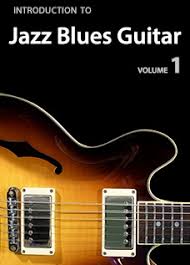
Browse in the Library:
Or browse in the categories menus & download the Library Catalog PDF:
